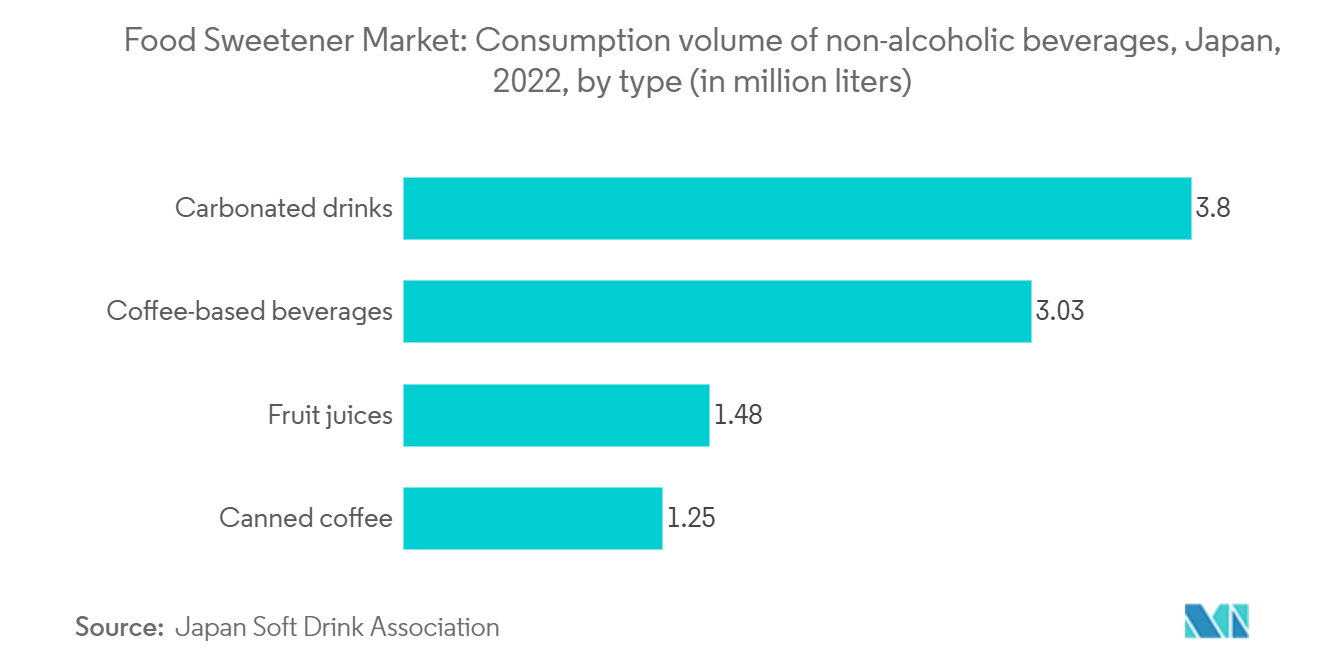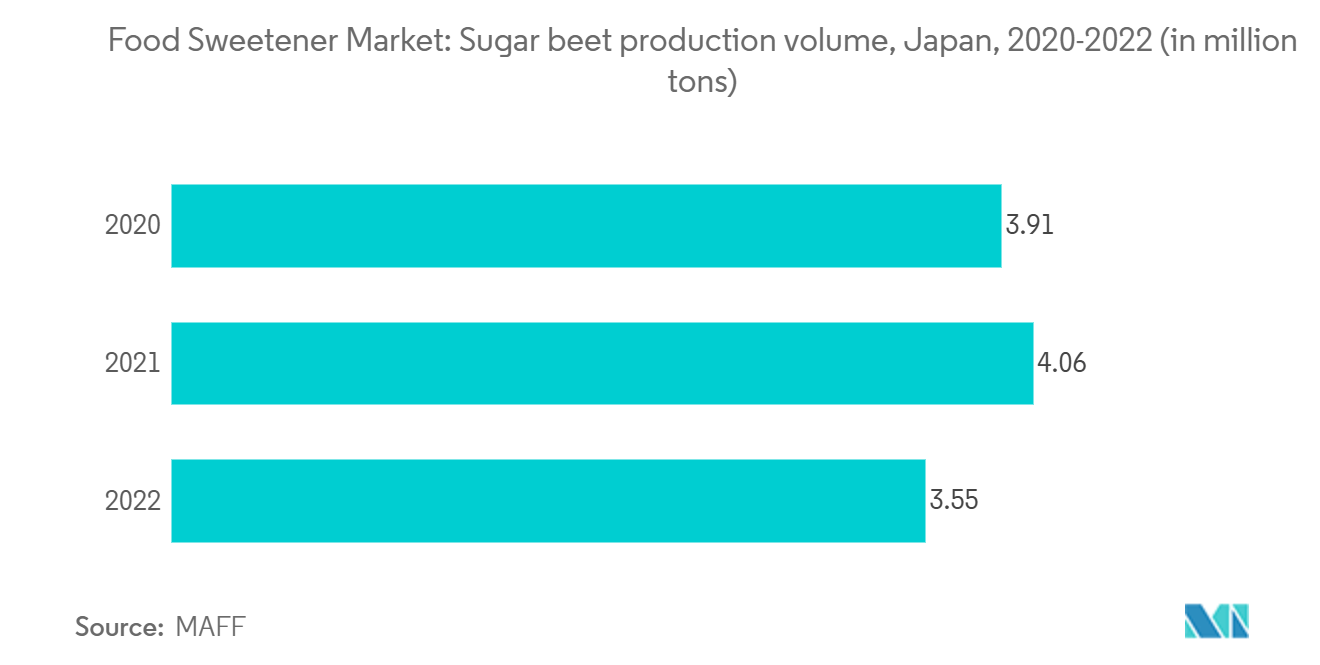Market Trends of Japan Food Sweetener Industry
High Consumption of Beverages Drive Demand for Sweeteners
Sweeteners play a crucial role in both alcoholic and non-alcoholic beverages, enhancing taste, reducing calories, balancing flavors, and aligning with consumer preferences. They are essential for achieving a harmonious flavor balance, blending sweet, sour, bitter, and acidic notes for a comprehensive taste experience. Furthermore, with the rising emphasis on health and wellness, consumers are gravitating towards beverages with reduced sugar content. Sweeteners address this shift, facilitating the creation of low-sugar or sugar-free alternatives. In Japan, the sports drink sector has shown a consistent demand for sugar-based sweeteners, a trend fueled by the vibrant sports and fitness culture. Renowned for their balanced mix of electrolytes, sugars, and nutrients, Japanese sports drinks prioritize hydration and recovery. Sugar-based sweeteners, like sucrose and glucose, are integral to these formulations, offering rapid energy release—a feature highly valued by athletes and fitness aficionados. Brands like Pocari and Sweat prominently incorporate these sweeteners, emphasizing their role in restoring electrolytic and water balance post-exercise or during dehydration. Moreover, many Japanese consumers view sugar-sweetened sports drinks as a swift energy boost for daily activities, extending beyond just exercise. This perception, coupled with the rising production of sports drinks in Japan—evidenced by a jump from 1.24 million kiloliters in 2021 to 1.44 million kiloliters in 2023, as reported by the Japan Soft Drink Association—has driven up the demand for sugar sweeteners. The market is populated by both domestic and international players who are ramping up production capacity and expanding operations to solidify their market presence. A testament to this trend is Conagen's March 2022 move to boost its production capacity for two new high-intensity natural sweeteners, thaumatin and brazzein, post regulatory nod from Japanese authorities. These sweeteners, now making waves in the beverage sector, serve as effective sugar substitutes.

Sucrose Is Preferred Over Other Types
Sucrose, widely recognized as 'table sugar' or 'cane sugar,' is extensively utilized across various sectors. Offered in powdered, granulated, or liquid forms, sucrose predominantly serves food and beverage manufacturers. Industry giants, such as Cargill, provide a transparent, 67.5° Brix liquid sucrose. This clarity ensures seamless integration into canned and bottled products, including soft drinks and dairy, without altering their original color. In Japan, sugar production is mainly sourced from sugar cane and sugar beets. According to the Statistics Bureau of Japan, sugar beet production was around 3.55 million tons in 2022. Sucrose is pivotal for the authentic taste of many traditional Japanese desserts, beverages, and dishes, ensuring consistent demand. It is extensively used in high-demand products like sushi rice, sauces, stews, pickles, and marinades. With the increasing consumption of processed foods, bakery items, soft drinks, and confectioneries, the demand for sucrose is further on the rise. Beyond its sweetening properties, sucrose acts as a stabilizer, preservative, and texturizer, further fueling its market growth. Its unique taste and versatility make it irreplaceable without compromising food sensory properties. The market for ready-to-drink (RTD) tea, coffee, fruit juices, and carbonated beverages is on the rise, with sucrose as a primary ingredient. As reported by Asahi Group Holdings, in 2023, RTD tea commanded a 30% share of Japan's soft drink market, trailed by RTD coffee at 18% and carbonated beverages at 15%. This trend heightens the demand for sucrose among Japanese beverage producers. Major companies manufacture a diverse range of sucrose ingredients, predominantly supplying them as bulk sweeteners for various industrial uses.


